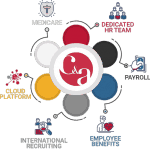On December 13, President Obama signed the 21st Century Cures Act, a massive bill revamping the FDA approval process, funding numerous new healthcare initiatives and addressing various other healthcare-related topics. Literally tacked on the end of this bill is a new type of employer healthcare arrangements call a Qualified Small Employer Health Reimbursement Arrangement – QSEHRA.
Starting in 2013, it became virtually impossible for employers to pay for individual health insurance premiums, either pre-tax or post-tax, without violating the ACA. The primary motivation behind these new Qualified Small Employer Health Reimbursement Arrangements (QSEHRA) is to create a mechanism that would allow for reimbursement of individual health insurance premiums – but only for certain employers.
There are two requirements for an employer to be able to offer a QSEHRA:
- Small employer. The employer must NOT be an Applicable Large Employer under the ACA’s employer shared responsibility provisions.
- No health plan. The employer must not offer a Group Health Plan to any of its employees.
So, an employer subject to the “play or pay” penalties can’t take advantage of these new arrangements. And even for an employer who is eligible, the employer must be willing to commit to the QSEHRA as its sole health plan option – the QSEHRA can’t be offered as an option alongside a traditional GHP, nor can the QSEHRA be offered to only some employees with other employees being offered a Group Health Plan.
The maximum benefit under a QSEHRA cannot exceed $4,950 for single coverage, or $10,000 for family coverage. These amounts must also be prorated if the employee is not covered under the QSEHRA for the entire year, e.g. in the case of a new hire or termination.
Some other things to consider:
- The employee is required to disclose the amount of benefits under the QSEHRA to the Exchange, which could affect the subsidy received.
- Employers must obtain “proof of coverage” – although it’s not clear just what this is referring to or how often the employer must obtain this proof.
- The amount of QSEHRA funds must be reported on the employee’s W-2 at the end of the year, presumably in Box 12, not as taxable income in Box 1.
- There will be administrative and other reporting requirements required of employers, of course.
If you would like more information or would like to discuss if this makes financial sense for you, please contact Christina King, cking@cabenefitsgrp.com.












